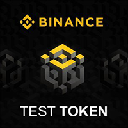-
 Bitcoin
Bitcoin $96,803.6177
2.81% -
 Ethereum
Ethereum $1,828.5581
1.68% -
 Tether USDt
Tether USDt $0.9999
0.01% -
 XRP
XRP $2.1468
2.05% -
 BNB
BNB $602.6394
0.89% -
 Solana
Solana $147.5968
2.36% -
 USDC
USDC $1.0001
0.00% -
 Dogecoin
Dogecoin $0.1716
2.33% -
 Cardano
Cardano $0.6808
3.84% -
 TRON
TRON $0.2444
-1.25% -
 Sui
Sui $3.3886
2.40% -
 Chainlink
Chainlink $13.9419
3.67% -
 Avalanche
Avalanche $19.8957
1.91% -
 Stellar
Stellar $0.2615
2.17% -
 UNUS SED LEO
UNUS SED LEO $8.7299
0.81% -
 Shiba Inu
Shiba Inu $0.0...01278
2.17% -
 Toncoin
Toncoin $3.0073
0.91% -
 Bitcoin Cash
Bitcoin Cash $375.7472
6.80% -
 Hedera
Hedera $0.1762
2.34% -
 Litecoin
Litecoin $92.0081
12.02% -
 Hyperliquid
Hyperliquid $20.8341
4.01% -
 Polkadot
Polkadot $3.9623
2.13% -
 Dai
Dai $1.0001
0.02% -
 Monero
Monero $284.6139
3.64% -
 Bitget Token
Bitget Token $4.3030
0.16% -
 Ethena USDe
Ethena USDe $1.0004
0.01% -
 Pi
Pi $0.5803
-0.99% -
 Pepe
Pepe $0.0...08024
2.72% -
 Bittensor
Bittensor $379.8013
3.26% -
 Uniswap
Uniswap $4.9649
1.30%
What is the total circulation of THORChain(RUNE) coins?
The current circulating supply of THORChain (RUNE) coins stands at approximately 270 million, representing the amount of RUNE tokens available for trading.
Dec 07, 2024 at 03:36 pm
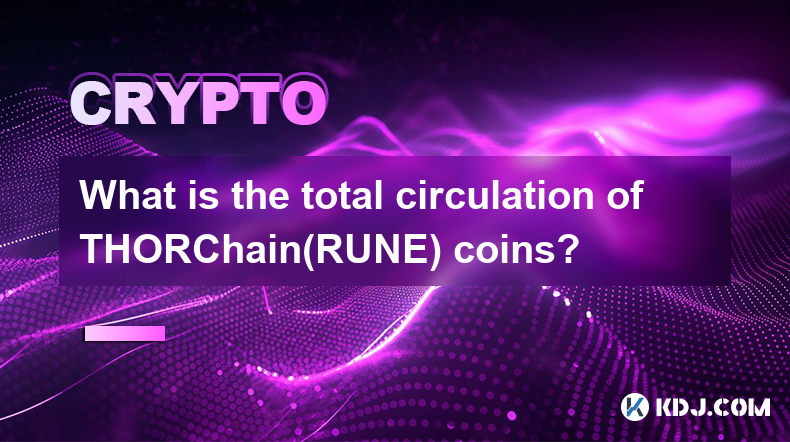
What is the Total Circulation of THORChain (RUNE) Coins?
THORChain (RUNE) is a decentralized, cross-chain liquidity network that enables the seamless exchange of crypto assets between different blockchains. It facilitates interoperability and eliminates the need for intermediaries or centralized exchanges, offering users greater control, security, and cost-effectiveness.
The total circulation of RUNE coins plays a crucial role in understanding the supply and demand dynamics of the network, as well as its overall market valuation. As of today, the following key details are relevant:
- Current Circulating Supply: The current circulating supply of RUNE coins stands at approximately 270 million, representing the amount of RUNE tokens currently in circulation and available for trading.
- Maximum Supply: The maximum supply of RUNE coins is capped at 500 million, which means that there is a finite number of RUNE tokens that can ever be created. This scarcity contributes to the intrinsic value of the coin and protects against inflation.
- Token Allocation: The distribution of RUNE tokens was determined during the initial coin offering (ICO) in 2019, with the majority of tokens allocated to the community (51.8%), followed by the team (28.8%), and investors (19.4%).
- Staking and Liquidity Incentives: THORChain employs a unique proof-of-stake (PoS) consensus mechanism that rewards node operators and liquidity providers who stake their RUNE tokens. By staking RUNE, participants contribute to the security and liquidity of the network and earn rewards in the form of additional RUNE tokens.
- Coin Burn: A portion of the transaction fees generated on the THORChain network is used to buy back and burn RUNE tokens, effectively reducing the circulating supply and increasing the scarcity of the coin. This burn mechanism is intended to support the long-term value of RUNE and control inflation over time.
- Community Governance: RUNE token holders have the power to participate in the governance of the THORChain network through the THORChain Council. This decentralized governance model allows the community to propose and vote on changes to the protocol, ensuring that the network remains responsive to the needs of its users.
Understanding the total circulation of THORChain (RUNE) coins provides valuable insights into the supply dynamics, market valuation, and long-term sustainability of the network. As THORChain continues to grow and expand its ecosystem, the circulating supply and maximum supply will play significant roles in shaping the future value and adoption of the RUNE token.
Disclaimer:info@kdj.com
The information provided is not trading advice. kdj.com does not assume any responsibility for any investments made based on the information provided in this article. Cryptocurrencies are highly volatile and it is highly recommended that you invest with caution after thorough research!
If you believe that the content used on this website infringes your copyright, please contact us immediately (info@kdj.com) and we will delete it promptly.
- Dogecoin (DOGE) Price Shows Signs of Recovery After a Week of Selling Pressure
- 2025-05-07 11:05:13
- The ups and downs of Jeffy Yu and Zerebro: from genius to turmoil
- 2025-05-07 11:05:13
- Dogecoin (DOGE) Price Struggles Under the $0.18 Resistance as Geopolitical Tension Rises. Here’s How DOGE Could React If It Matches 30% of US M1 Supply
- 2025-05-07 11:00:27
- Melania Trump's "Meme Coin" Got Dumped by Early Investors, Making Them Millions
- 2025-05-07 11:00:27
- Bitcoin (BTC) Head and Shoulders Pattern Could Be Forming, XRP (XRP) Drops Below 200-Day EMA
- 2025-05-07 10:55:12
- RCO Finance Is Drawing More Users Than Dogecoin and Shiba Inu Combined, Here’s Why
- 2025-05-07 10:55:12
Related knowledge
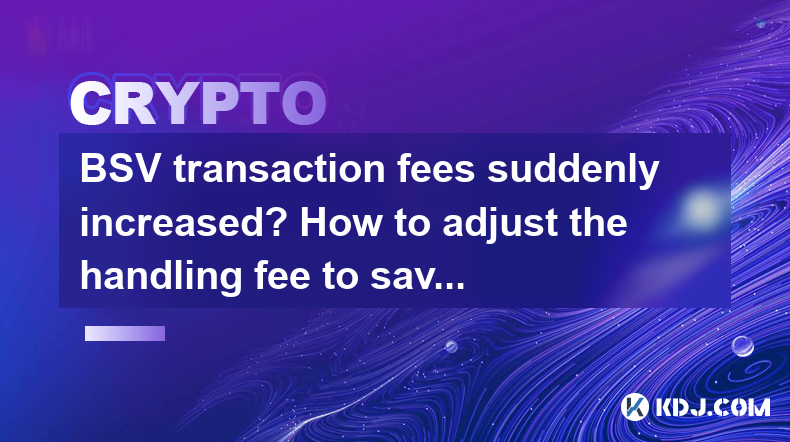
BSV transaction fees suddenly increased? How to adjust the handling fee to save costs?
May 02,2025 at 06:42am
Understanding BSV Transaction FeesBSV (Bitcoin SV) aims to fulfill the original vision of Bitcoin as a peer-to-peer electronic cash system. One of the key elements in this system is the transaction fee, which compensates miners for including transactions in the blockchain. Recently, users have noticed a sudden increase in BSV transaction fees, which can...
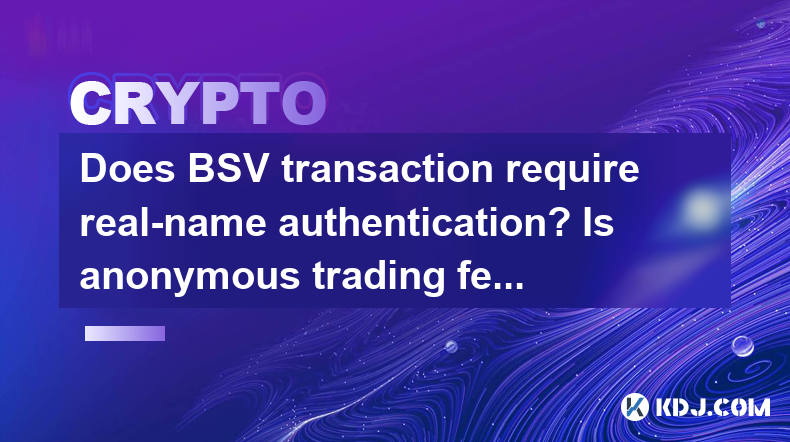
Does BSV transaction require real-name authentication? Is anonymous trading feasible?
May 03,2025 at 03:14pm
The question of whether BSV (Bitcoin SV) transactions require real-name authentication and whether anonymous trading is feasible is a complex one, deeply intertwined with the broader dynamics of cryptocurrency regulations and blockchain technology. Let's delve into these aspects to provide a comprehensive understanding. Understanding BSV and Its Transac...
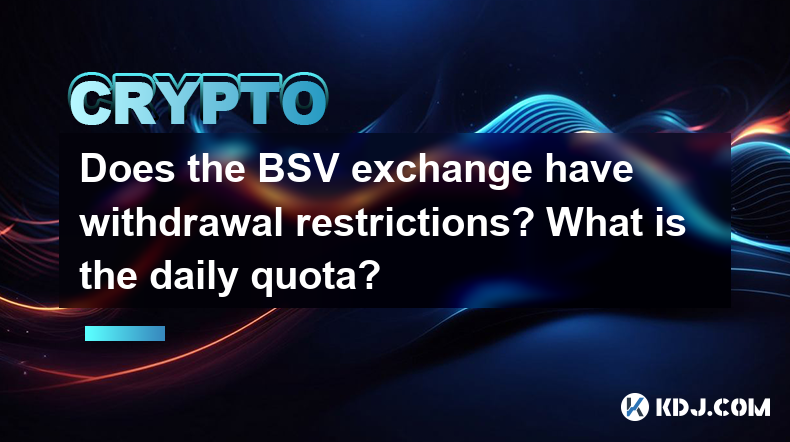
Does the BSV exchange have withdrawal restrictions? What is the daily quota?
May 07,2025 at 08:01am
The BSV (Bitcoin SV) exchange, like many other cryptocurrency platforms, implements various withdrawal restrictions and daily quotas to ensure the security and stability of the platform. Understanding these restrictions is crucial for users who frequently engage in transactions involving BSV. This article delves into the specifics of withdrawal restrict...
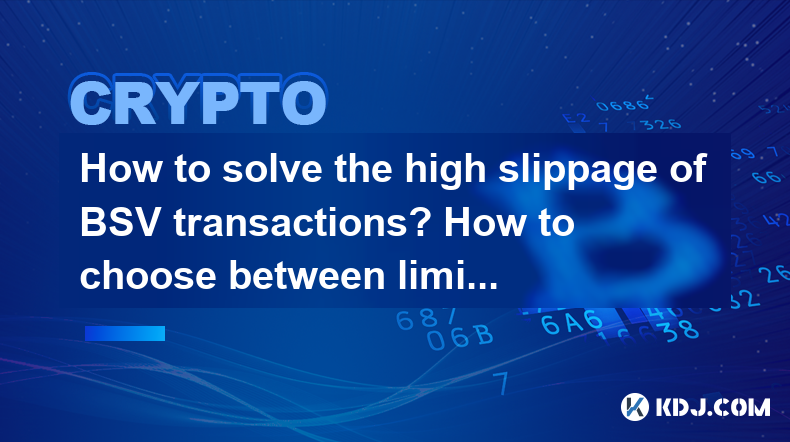
How to solve the high slippage of BSV transactions? How to choose between limit and market orders?
May 02,2025 at 09:01pm
High slippage can be a significant concern for traders dealing with Bitcoin SV (BSV) transactions. Slippage refers to the difference between the expected price of a trade and the price at which the trade is actually executed. This can occur in fast-moving markets or when there is low liquidity. To address this issue, understanding the mechanics of slipp...

What if BSV transactions are frozen? How to contact customer service to unblock the account?
May 05,2025 at 05:01am
When dealing with Bitcoin SV (BSV) transactions, encountering issues such as frozen transactions can be a stressful experience. This article will guide you through the process of understanding why BSV transactions might be frozen and how to contact customer service to unblock your account. We will cover the reasons behind frozen transactions, steps to t...
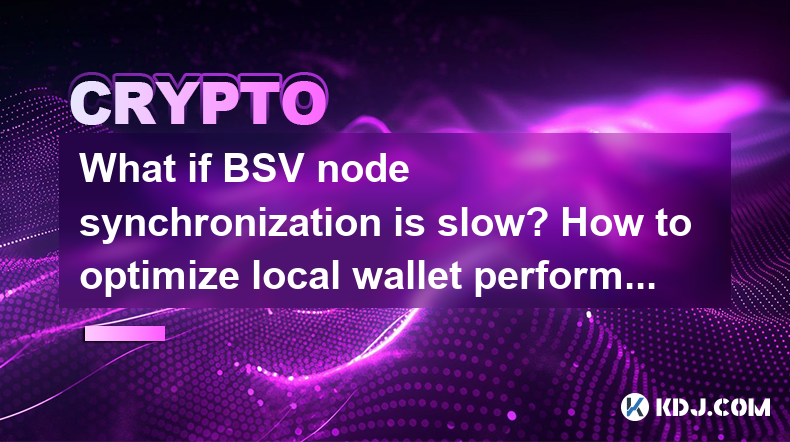
What if BSV node synchronization is slow? How to optimize local wallet performance?
May 03,2025 at 04:35pm
When dealing with BSV (Bitcoin SV) node synchronization and optimizing local wallet performance, it's crucial to understand the underlying issues and implement effective solutions. Slow synchronization and poor wallet performance can significantly hinder your experience with the BSV network. This article will delve into the reasons behind slow BSV node ...

BSV transaction fees suddenly increased? How to adjust the handling fee to save costs?
May 02,2025 at 06:42am
Understanding BSV Transaction FeesBSV (Bitcoin SV) aims to fulfill the original vision of Bitcoin as a peer-to-peer electronic cash system. One of the key elements in this system is the transaction fee, which compensates miners for including transactions in the blockchain. Recently, users have noticed a sudden increase in BSV transaction fees, which can...

Does BSV transaction require real-name authentication? Is anonymous trading feasible?
May 03,2025 at 03:14pm
The question of whether BSV (Bitcoin SV) transactions require real-name authentication and whether anonymous trading is feasible is a complex one, deeply intertwined with the broader dynamics of cryptocurrency regulations and blockchain technology. Let's delve into these aspects to provide a comprehensive understanding. Understanding BSV and Its Transac...

Does the BSV exchange have withdrawal restrictions? What is the daily quota?
May 07,2025 at 08:01am
The BSV (Bitcoin SV) exchange, like many other cryptocurrency platforms, implements various withdrawal restrictions and daily quotas to ensure the security and stability of the platform. Understanding these restrictions is crucial for users who frequently engage in transactions involving BSV. This article delves into the specifics of withdrawal restrict...

How to solve the high slippage of BSV transactions? How to choose between limit and market orders?
May 02,2025 at 09:01pm
High slippage can be a significant concern for traders dealing with Bitcoin SV (BSV) transactions. Slippage refers to the difference between the expected price of a trade and the price at which the trade is actually executed. This can occur in fast-moving markets or when there is low liquidity. To address this issue, understanding the mechanics of slipp...

What if BSV transactions are frozen? How to contact customer service to unblock the account?
May 05,2025 at 05:01am
When dealing with Bitcoin SV (BSV) transactions, encountering issues such as frozen transactions can be a stressful experience. This article will guide you through the process of understanding why BSV transactions might be frozen and how to contact customer service to unblock your account. We will cover the reasons behind frozen transactions, steps to t...

What if BSV node synchronization is slow? How to optimize local wallet performance?
May 03,2025 at 04:35pm
When dealing with BSV (Bitcoin SV) node synchronization and optimizing local wallet performance, it's crucial to understand the underlying issues and implement effective solutions. Slow synchronization and poor wallet performance can significantly hinder your experience with the BSV network. This article will delve into the reasons behind slow BSV node ...
See all articles























![BONK COIN PRICE PREDICTION , [ WEDNESDAY ! ] BONK COIN PRICE PREDICTION , [ WEDNESDAY ! ]](/uploads/2025/05/07/cryptocurrencies-news/videos/bonk-coin-price-prediction-wednesday/image_500_375.webp)
























































